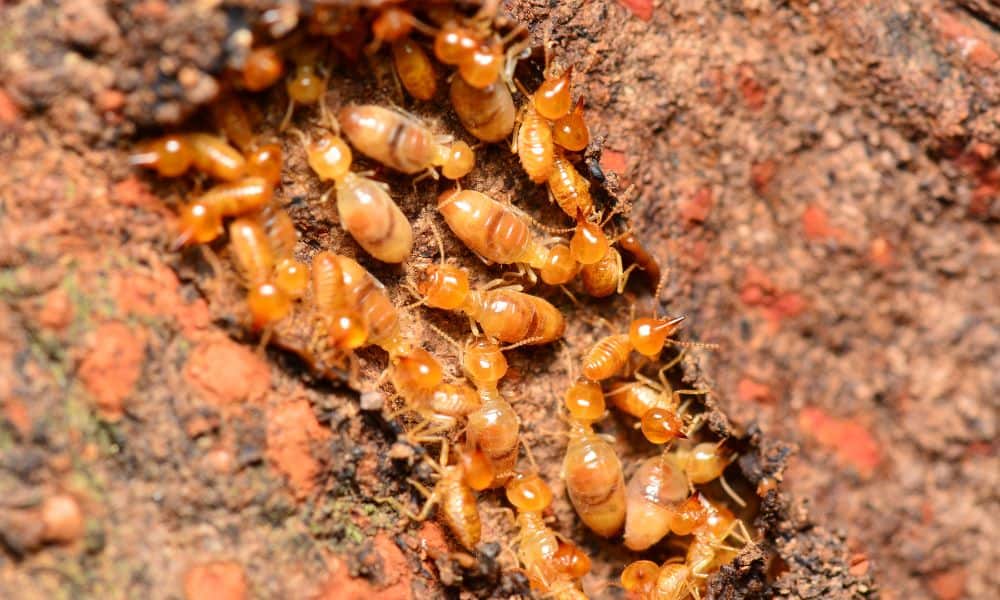It’s easy to spot termites outdoors. You might see the winged ones after it rains, or watch some scrambling in panic when you pick up some dead leaves. You may even see termite runs on tree trunks and dried logs. But what are the signs of termites in walls? How can you tell when they’re hiding in the woodwork of your house? Let’s find out how to detect them.
Signs of Termites in Walls
1. Pale Lines and Paint Bubbles
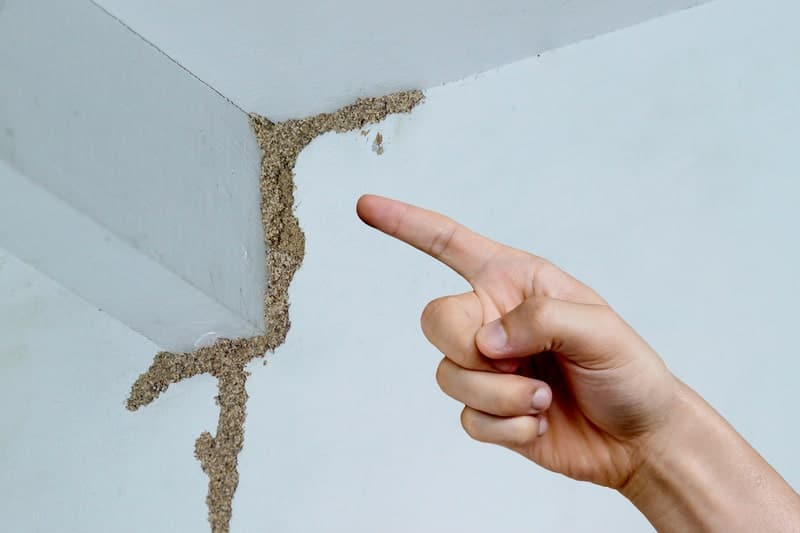
Image Credit: terminix
Termites have a translucent exoskeleton that makes them susceptible to sunlight. Outdoors, they build soil runs and tunnels to protect them from UV rays. But inside walls, they’re safe from the sunshine and can do a lot of damage before you even notice them. A colony with 50,000 termites can eat a 2-foot piece of 2 x 4 wood in a year. But colonies can reach 1M+!
Usually, termites start their tunnels underground then snake them up the wall to access cellulose. These termite runs will then penetrate the hidden parts of the wall. On the outer surfaces, you might see faint lines that correspond to the tunnels concealed inside the walls. This is clearest on drywall and wallpaper. You may also see peeling paint and puffy bubbles.
2. Struggling with Doors and Windows
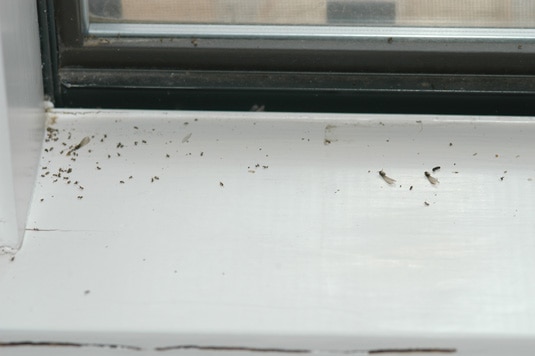
Image Credit: extension.msstate
In school, we all learned that the world is constantly moving as it spins on its axis and goes around the sun. That’s what causes wind, waves, earthquakes, and other tectonic shifts. But we often forget this fact in everyday life. At least until you’re in a skyscraper and you feel the whole building sway. Or when you notice cracks in the wall that suggest the floor is sinking.
These factors can help you detect signs of termites in walls. As bugs eat through the wood, gravity + subtle earth movements make your doors, windows, and studs adjust themselves to fill up the hollow spaces. This can mean your window sills and door frames migrate ever so slightly and start to jam. So when your entryways are suddenly sticking, that could be a clue.
3. Tiny Holes on Papered Surfaces
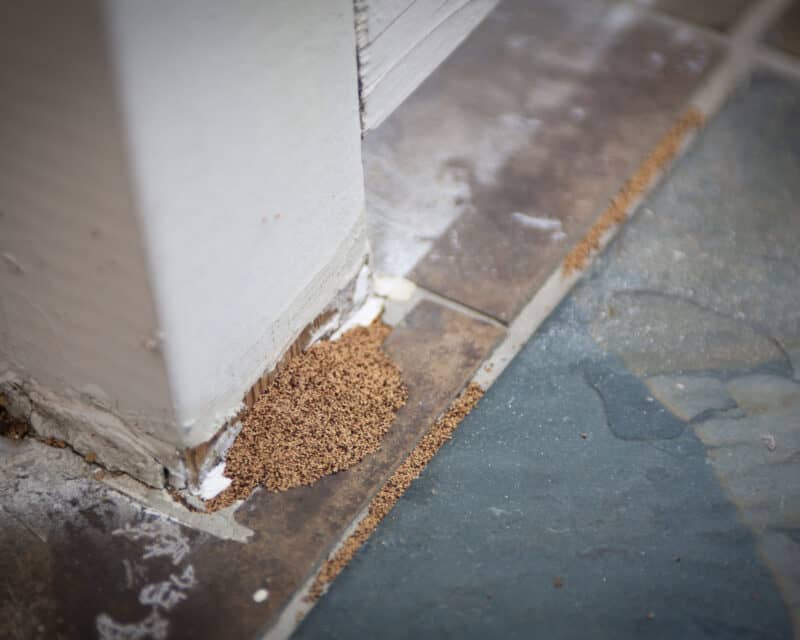
Image Credit: kapturepest
Most creatures – including humans – can’t digest cellulose. But termites have special germs and bacteria in their tummies that can break it down. And it’s not just in wood. These insects can also consume the cellulose in cardboard, household adhesives, books, and some natural fabrics. So while termites prefer timber frameworks, they can eat wallpaper and drywall too.
As they finish the wood inside the studs, they may start to nibble on the outer drywall and plaster, poking holes through it. They won’t eat much of this exterior material because it exposes them to sunlight. But if you have a nasty termite infestation, you might notice a network of pinpricks and tiny holes where the insects started to burrow their way outward.
4. Crumbling Surfaces and Hollow Sounds
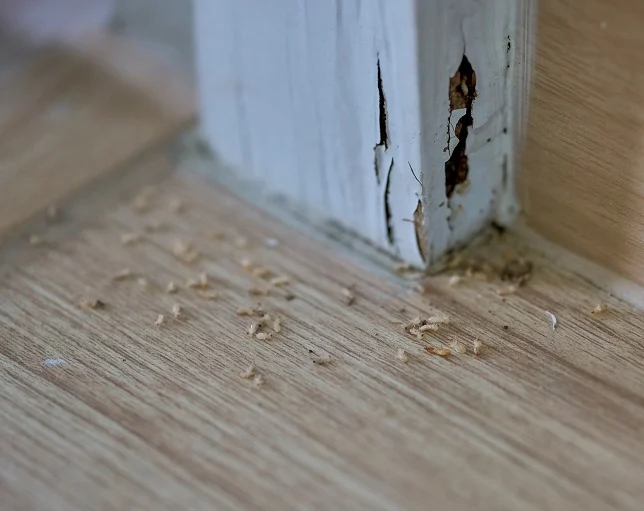
Image Credit: info.nnins
On mystery shows and treasure-hunting excursions, you’ll often see people rapping on the walls. They’re listening for hollow sounds that may suggest a hidden passage or secret cache. This quirky habit can help you detect termites too. As they eat more and more of the wood, they leave gaps and airways behind the walls, and you can hear them if you knock carefully.
If you shine a flashlight directly on some walls, you might see the Swiss cheese remnants of their passing. And if you lean on a badly damaged wall or kick a baseboard, it might crumble beneath your foot or fist. You might even fall through if the framework is too perforated to support your weight. But this is a very late-stage sign so by then, things may be irreparable.
5. Rattling Noises at Intervals
Termites are deaf and almost blind. Kings and queens see better because when they fly out of their colony as alates, they need to find each other and spot new nesting sites. But soldiers and workers can barely see and some have no eyes at all. Instead, they navigate the world via pheromones and vibrations, banging their heads on nearby surfaces as their warning system.
When you tap a termite-infested wall or disturb it in some way, the bugs inside may initiate a rhythmic head-banging to alert their teammates of potential danger. If you’re close enough and your surroundings are relatively quiet, you may hear those rattling sounds. They usually make their rocker sounds for a few seconds then stop, and it’s quieter than a rodent sound.
6. Termite Frass on Certain Surfaces
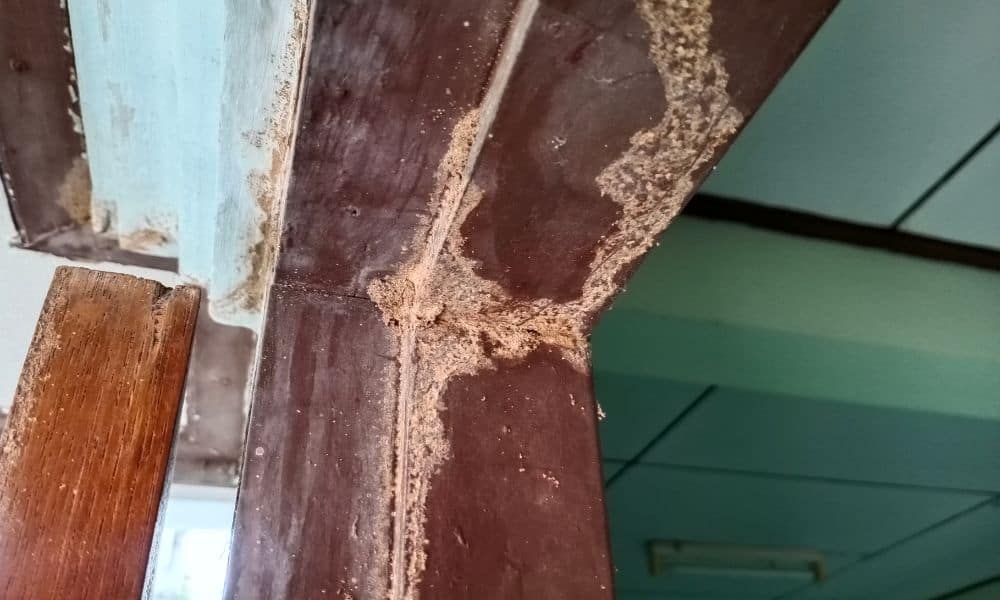
The members of a termite colony are categorized by their roles. Royals make babies so they never leave the nest. Younger workers look after the babies while older ones go out to find food. They digest this food onsite the carry it back to the nest in their tummies. They give this food to the royals, soldiers, babies, and their babysitters, either mouth-to-mouth or rear-end.
Since workers process the food as they go, they often deposit their waste at the bottom of the termite run. This is a clear sign of termites in walls since you’ll see this waste on window sills and cornered surfaces. It looks like dark sawdust or grizzled particles, and it’s referred to as termite frass. If you check with a magnifying glass, you’ll see 1mm pellets with oval shapes.
7. Hints of Apparent Water Damage
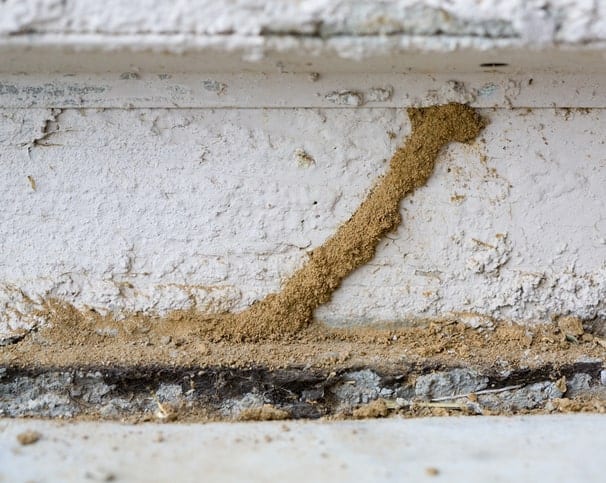
Image Credit: terminix
Why do termites make your paint peel? As they walk through the walls gnashing at bits of timber, the moisture from their bodies seeps into the walls. This loosens the adhesive in the paint, making it bubble and peel off the walls. Similarly, the holes these termites drill into the wall allow surrounding moisture to sneak into the gaps, leaving water stains on the walls.
This means outward signs of water damage could indicate termites as well as leaks in your plumbing. It’s a cyclic process because dripping water makes the wood soft and sticky, which attracts termites, and vice versa. Look for discolored patches, water stains, and warped or buckled wood as well as the peeling paint we mentioned earlier. Especially in rainy seasons.
8. Damage to Your Decorative Trim
Baseboards, chair rails, and crown moldings aka cornice moldings are key structural details in any home. They’re worked onto the corners where your walls meet your floor and ceilings. Household trim is both aesthetic and functional. It’s also a good spot to check for signs of termites on walls. Look for holes, water stains, discarded wings, or termite frass.
The trim on these areas is often contrasted with the color of your walls and ceilings, so it’s easier to detect damage. It also provides a more cost-effective fix than re-doing the entire wall or replacing your wall studs. By keeping a close eye on baseboards and cornices, you can catch the termites sooner and get rid of them before their crumbling networks fill your walls.
9. Termite Tubes at Ground Level
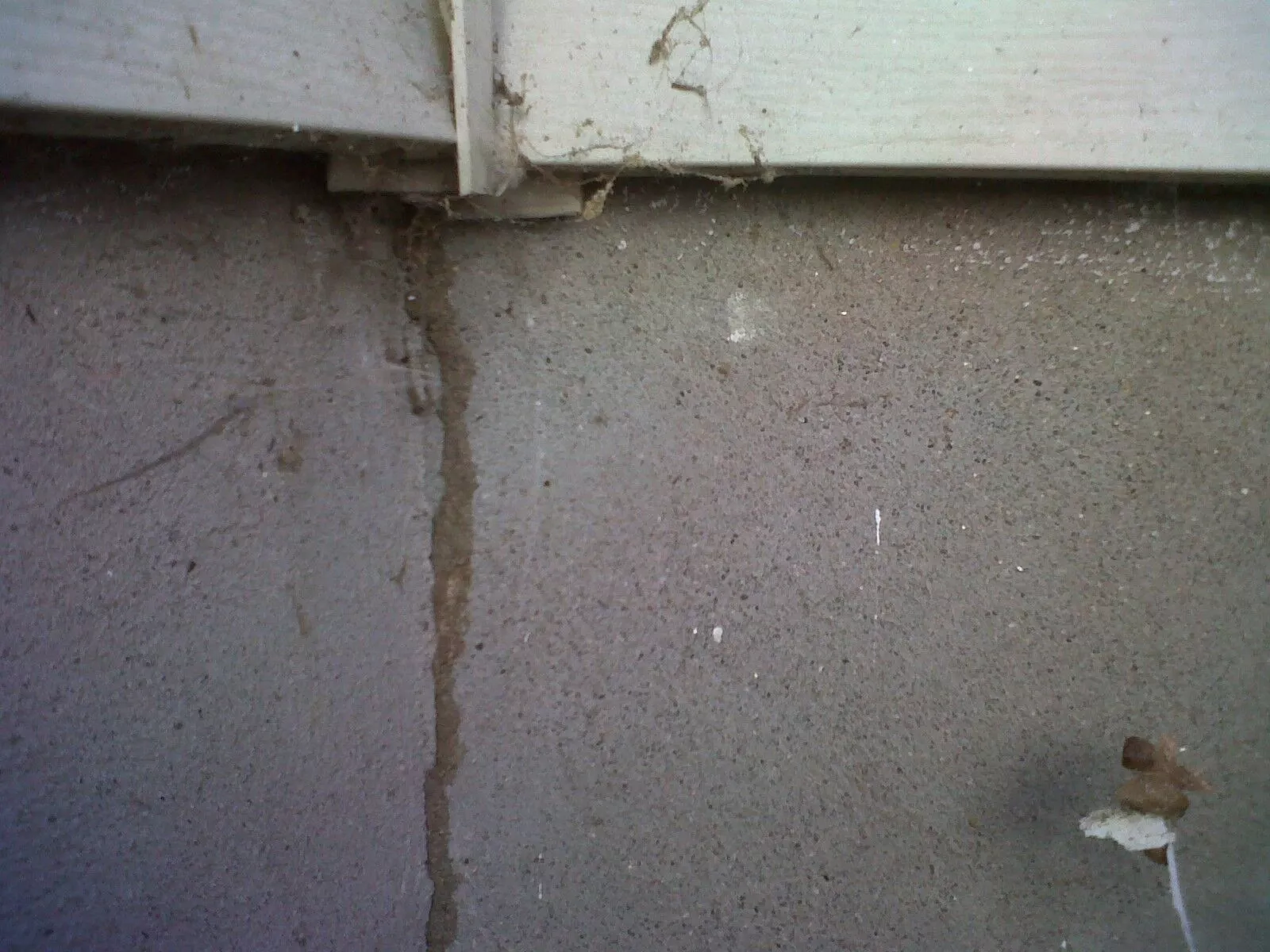
Image Credit: greenhow
As we mentioned, most termites access your walls by burrowing through the soil and making protective tunnels to shield their ascent. So if you have wood or mulch around the base of the house, do a routine inspection to check for termite runs. They’re the earliest signs of termites in walls and can be far more useful than waiting for the paint to peel or the walls to hollow.
Termites make these tubes using mud and saliva. And since the termite runs bake in the sunlight, they can last a long time. Use a stick to poke the tunnels and see if any bugs are inside. They might be long abandoned, in which case you’re probably fine. Either way, scrape the mud tubes off the walls and floors. This prevents other bugs from gaining further access.
10. Loose Wood Panelling
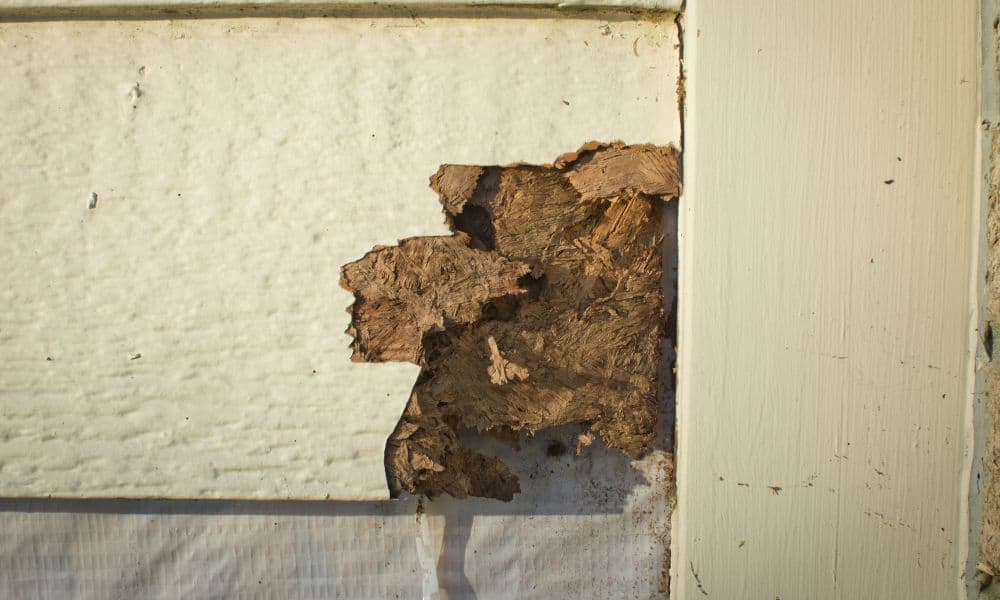
Depending on how your walls are built, panels can be the first target for termites. If these insects slip between the cladding and the housing structure, their feeding and tunneling can dot your walls with destructive mazes. Smaller bits of the panels may come loose or break away from the rest of the wall. You might bump into the wall and hear panels crashing down.
You might also notice a network of holes on the outer sections of your paneling, especially if it wasn’t treated for bugs, moisture, or fungus. But even on sealed, caulked, or painted panels in older homes, the stain or coating may fade or wash off over time. Inspect your paneling regularly for signs of termites, and consider replacing them with pest-proof PVC cladding.
11. Exterior Signs of Termites
If you can see signs of termites in the surrounding areas, it’s possible some have snuck into your walls. So if lots of alates are swarming your neighborhood in the spring, or you can see a network of termite hills in your area, it means the weather conditions and food supply in your region are suitable for termites. Check if the termite mounds are currently occupied.
They might be abandoned, which is safer, but they might also make a convenient home for other pests like ground squirrels, weasels, or prairie dogs, so it’s best to destroy them either way. You can pour boiling water down the entrance then trample the tops. But these nests sometimes go several feet deep and can be 300 feet wide. You’re barely grazing the surface.
Do you know any other signs of termites in walls? Tell us in the comments section below!
